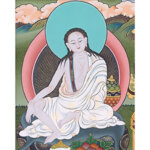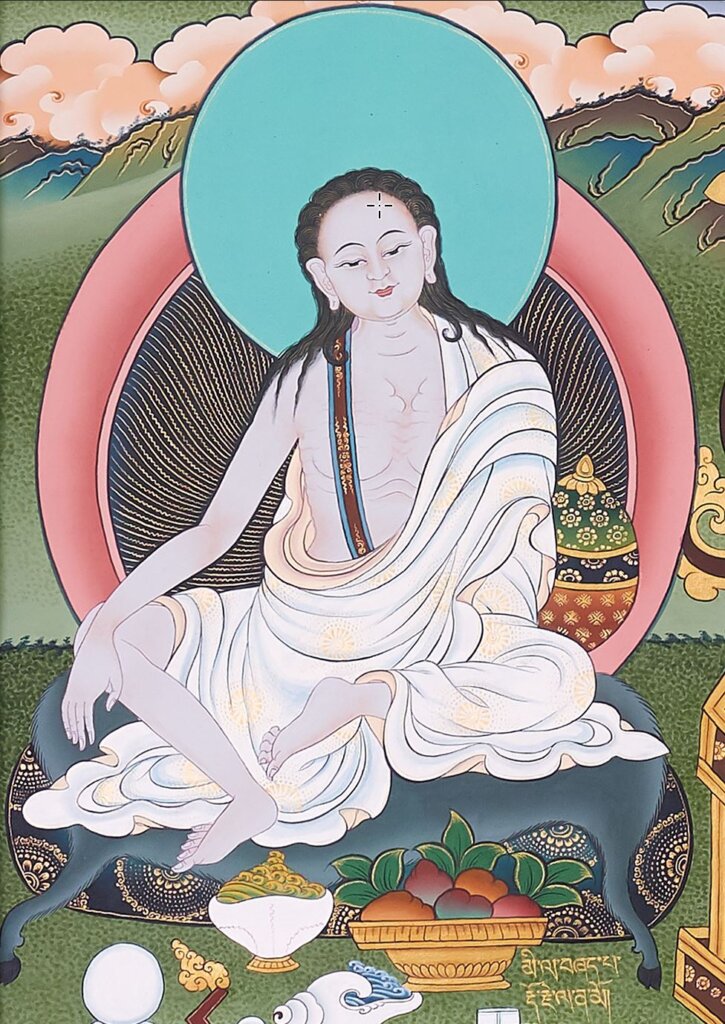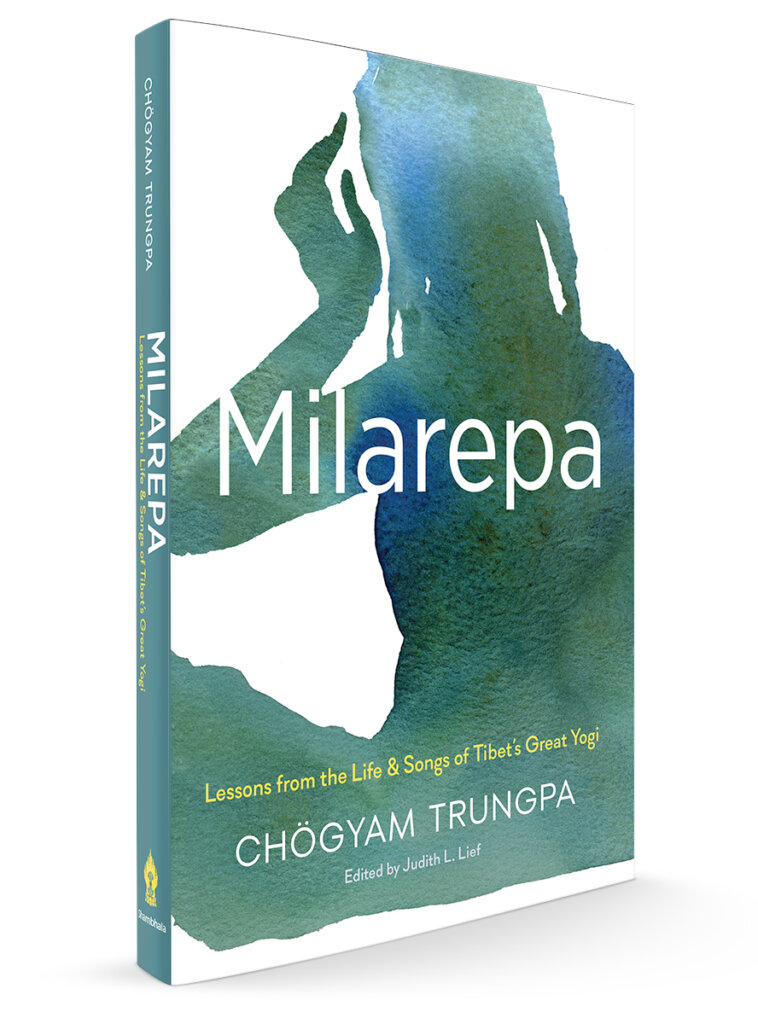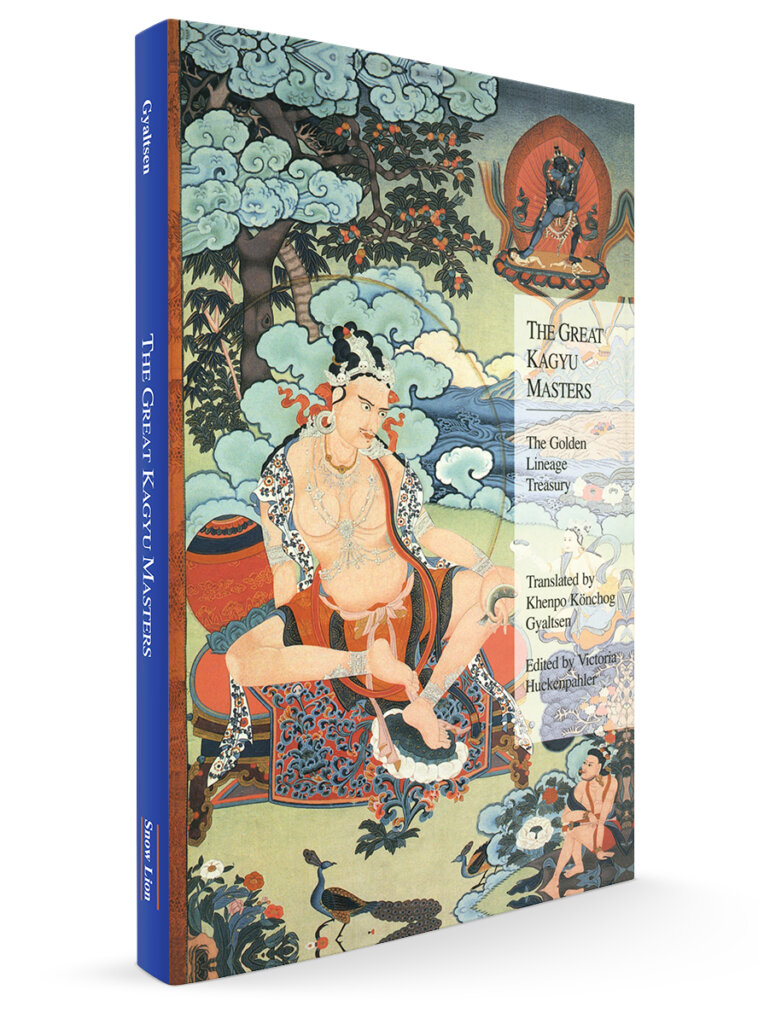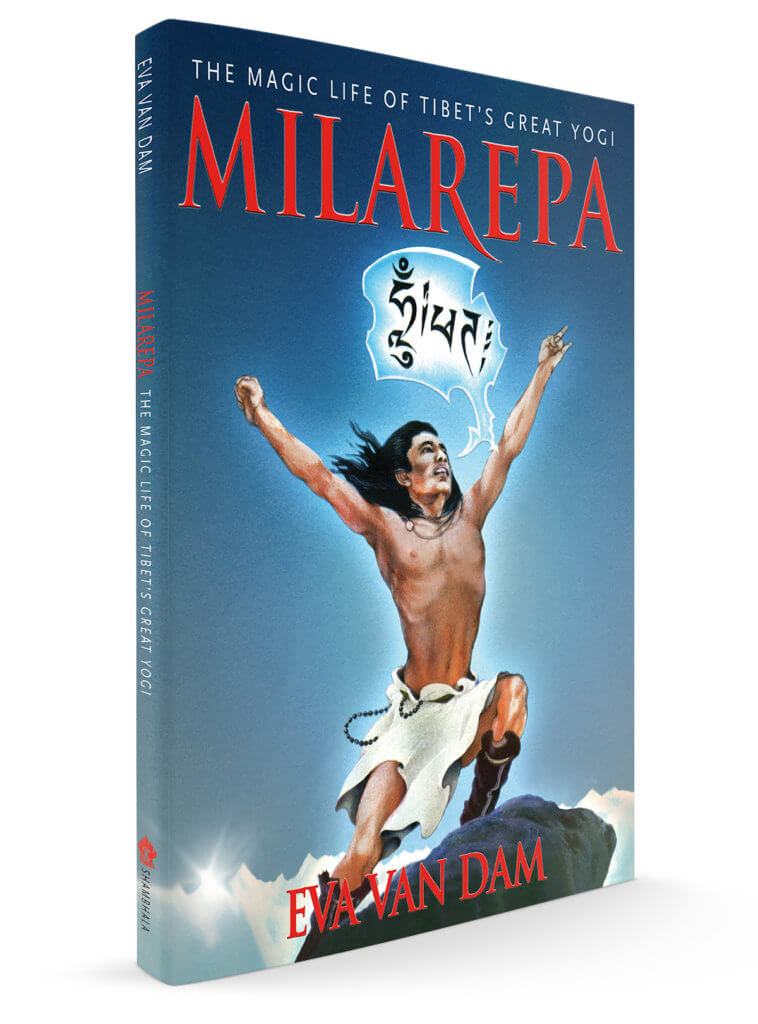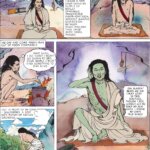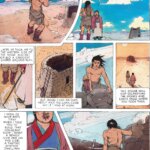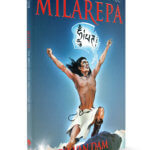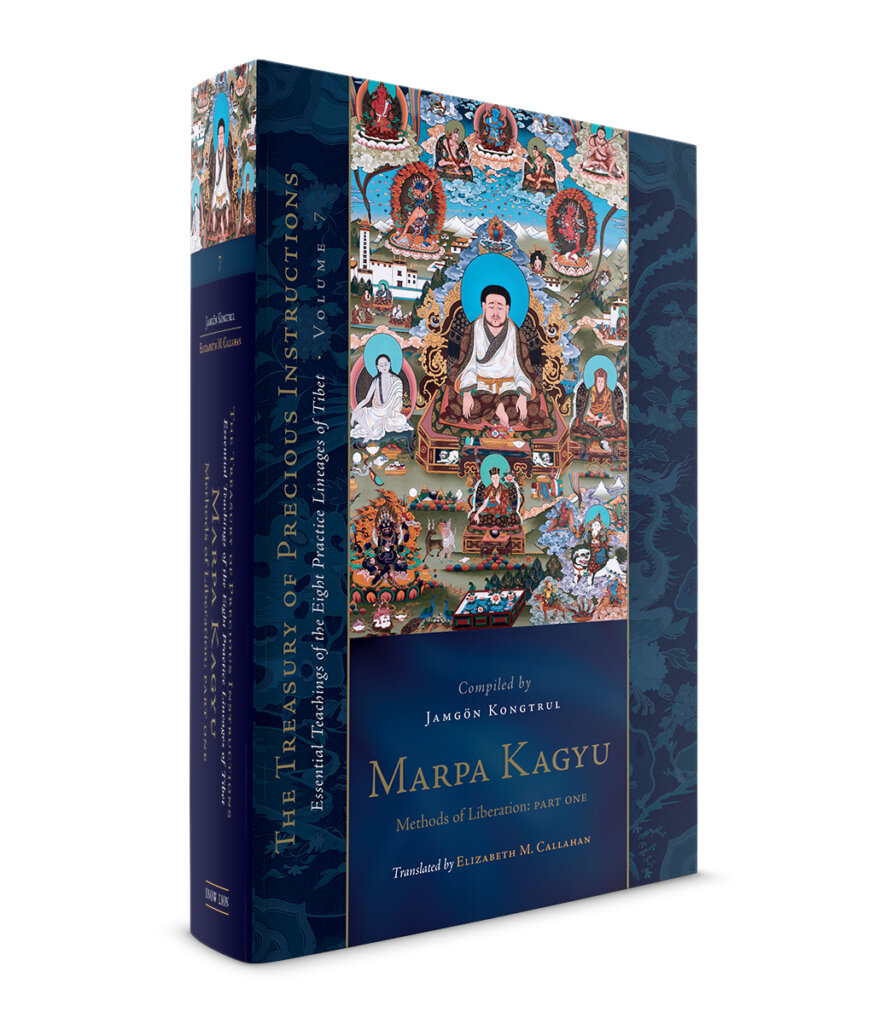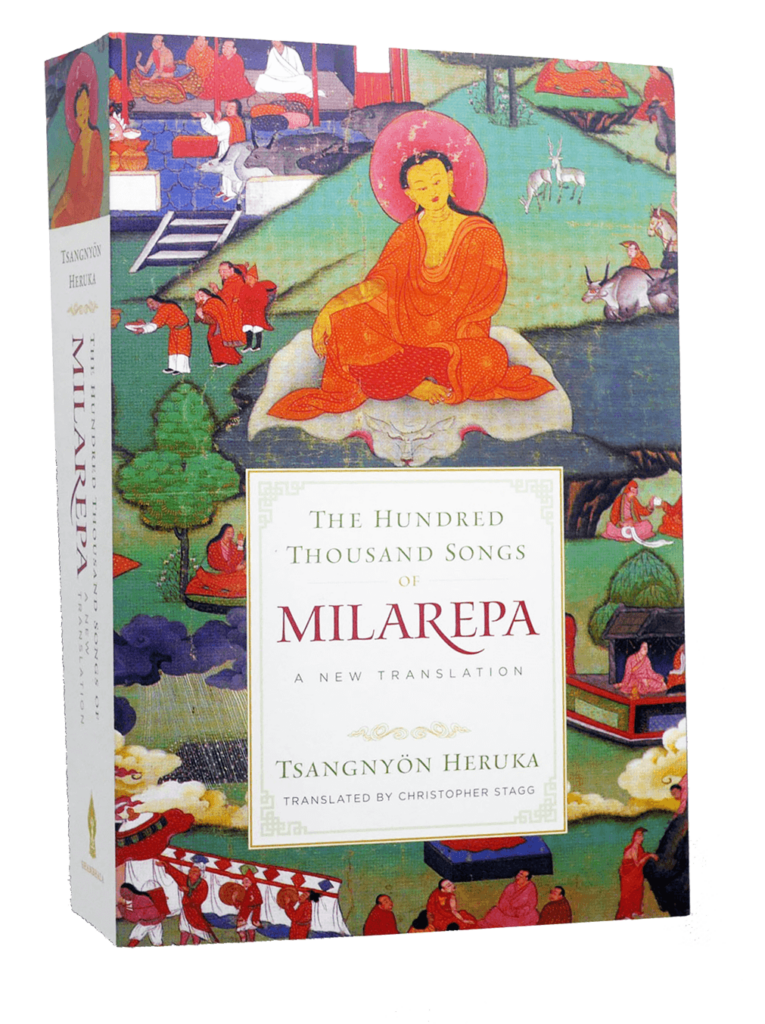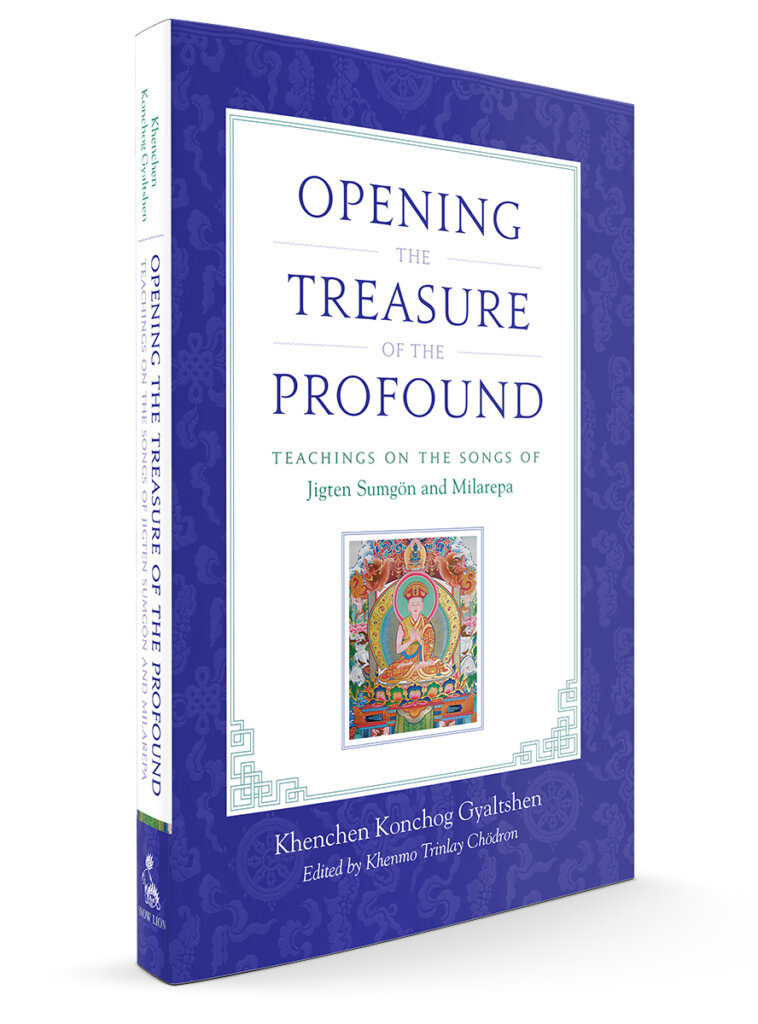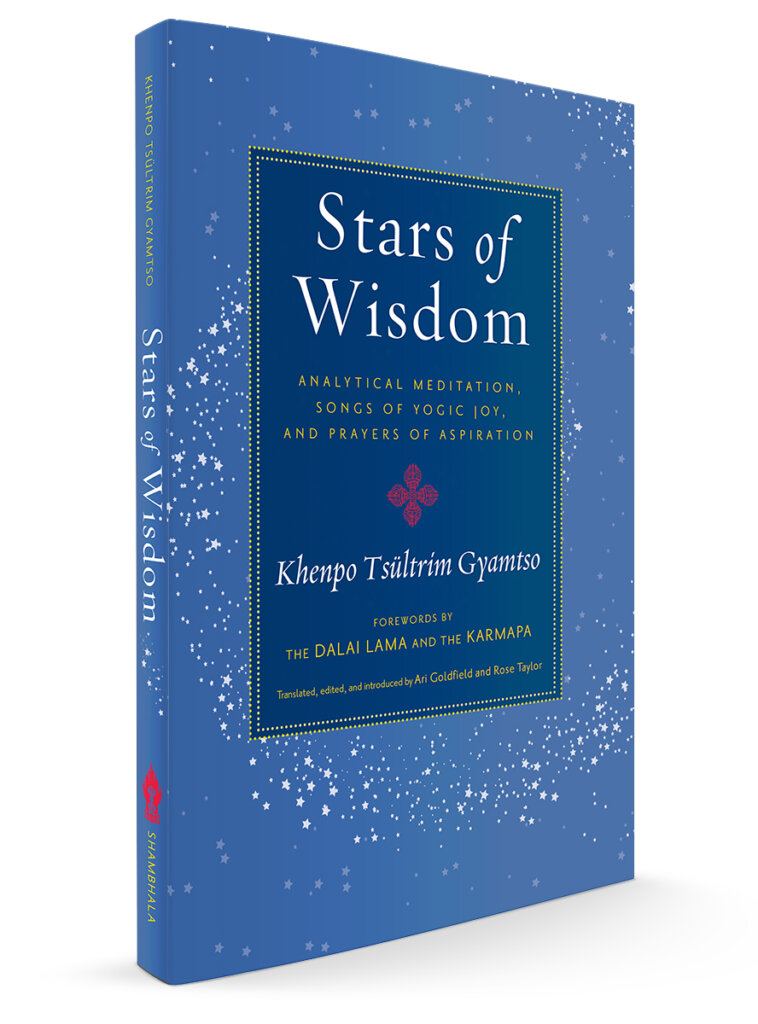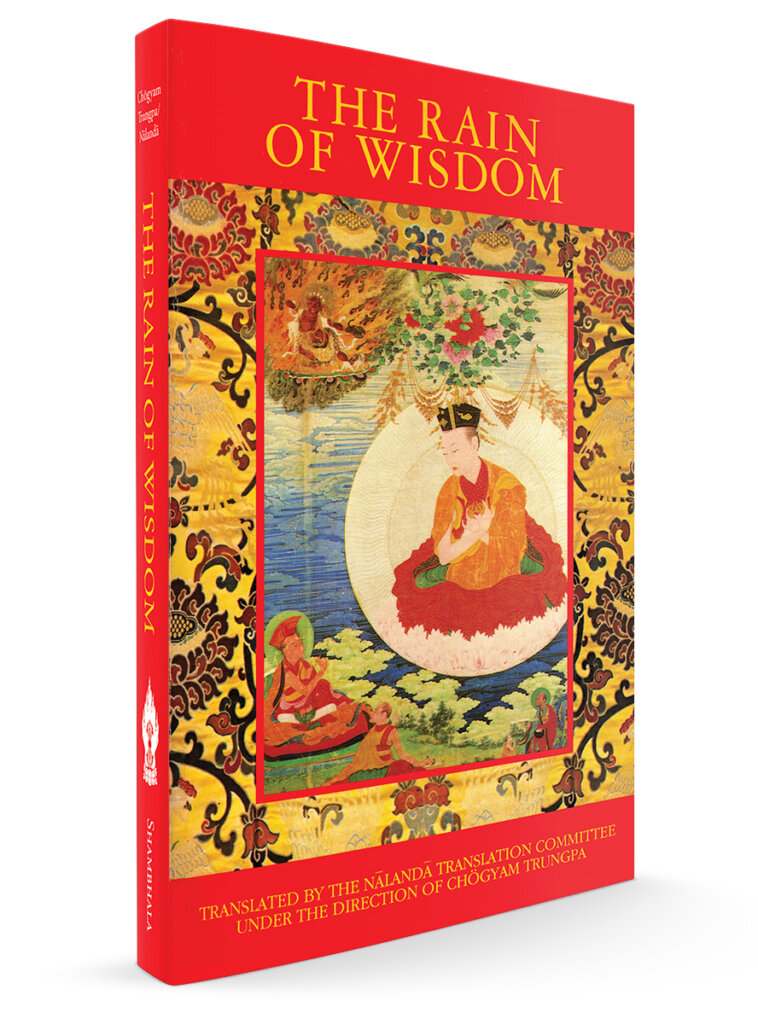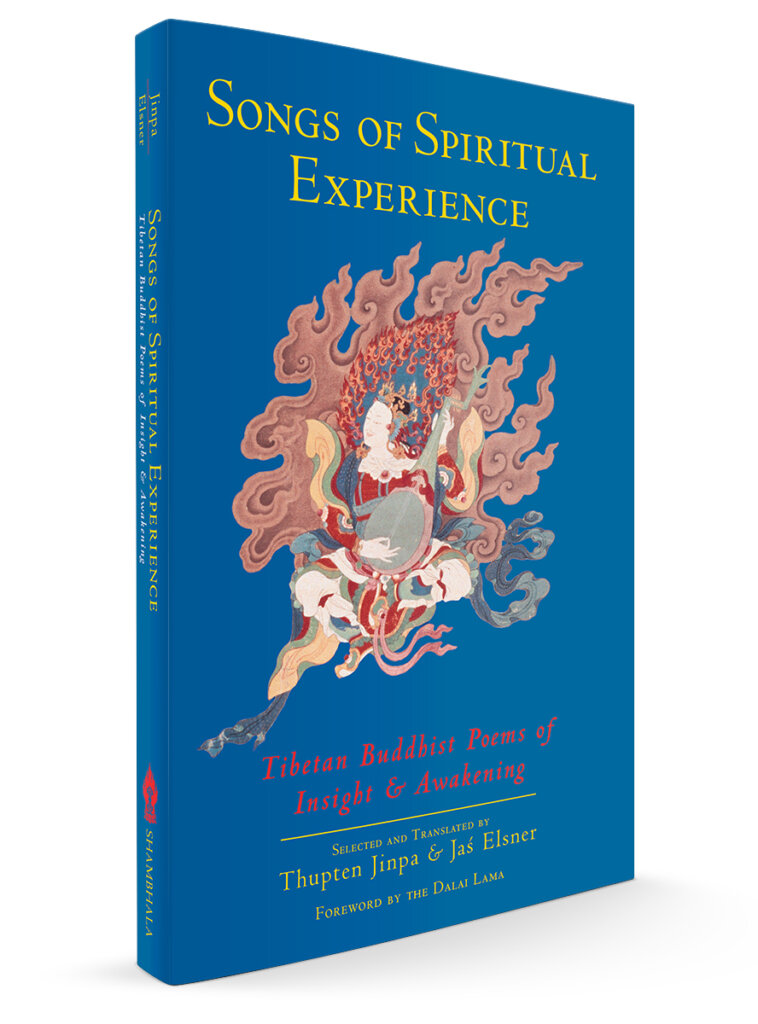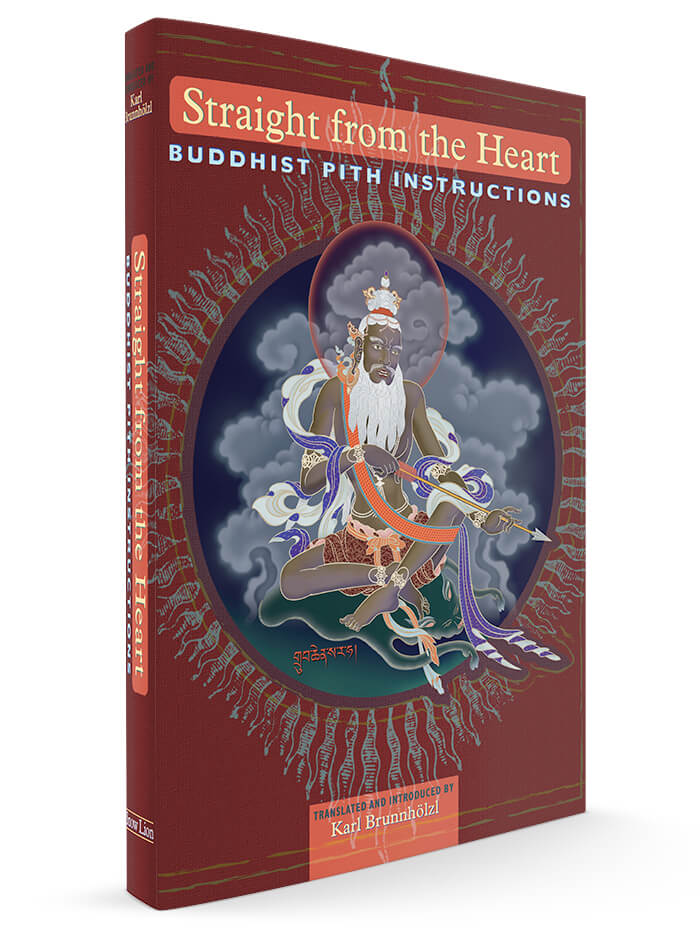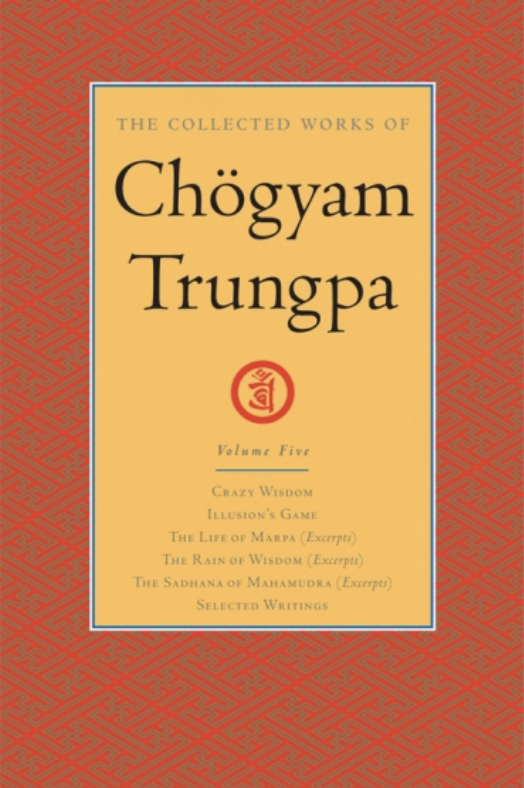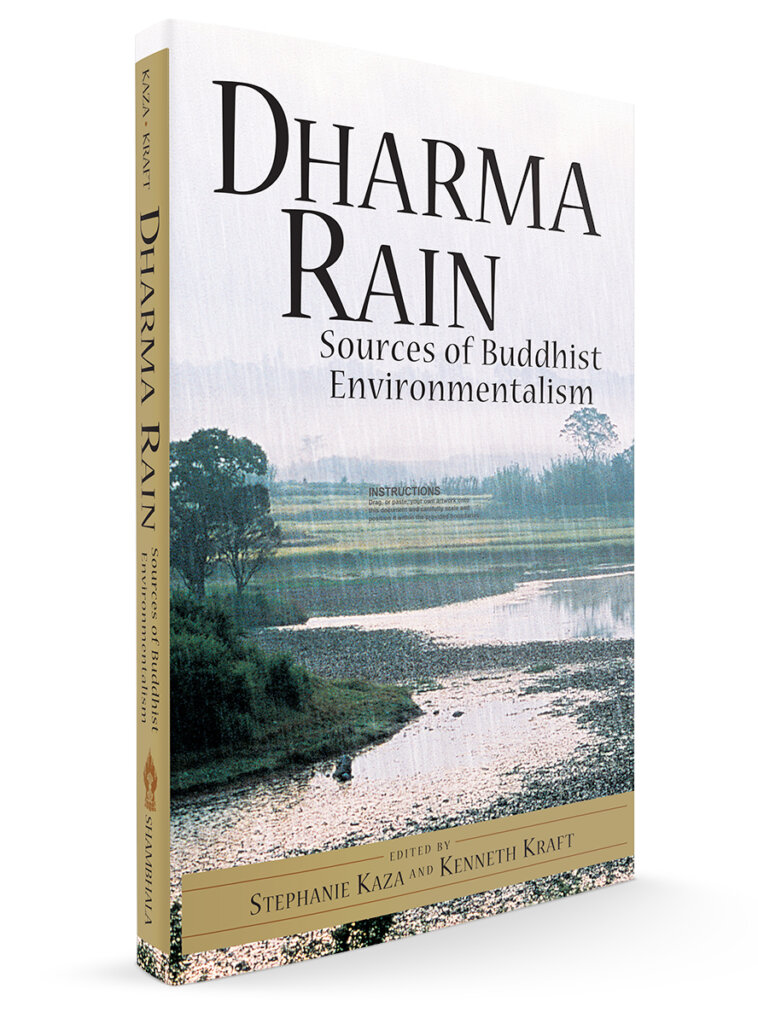There are few figures more beloved in the Buddhist Himalayas than the 11th century yogi-hero Milarepa.
His story of hardship, errant paths, disciplined training, heartbreak, devotion, and ultimate liberation have been told in many places. Stories of his life, as well as teachings on his songs, abound—dozens of Shambhala Publications and Snow Lion books feature him. His example and teachings appear across all traditions of Tibetan Buddhism.
Milarepa's wisdom has likely reached more people through Pema Chödron's When Things Fall Apart than all these books combined. In one section, Ani Pema relates:
"Over the years, as I read and reread Milarepa’s story, I find myself getting advice for where I am stuck and can’t seem to move forward. To begin with, Milarepa was a murderer, and like most of us when we blow it, he wanted to atone for his errors. And like most of us, in the process of seeking liberation, he frequently fell flat on his face. He lied and stole to get what he wanted, he got so depressed he was suicidal, and he experienced nostalgia for the good old days. Like most of us, he had one person in his life who continually tested him and blew his saintly cover. Even when almost everyone regarded him as one of Tibet’s most holy men, his vindictive old aunt continued to beat him with sticks and call him names, and he continued to have to figure out what to do with that kind of humiliating squeeze."
This is a great example of how Milarepa matters to us practitioners today.
Below you will find a set of other resources to learn more about Milarepa, and be inspired by his example.
Milarepa's Life
Jetsun Milarepa was first introduced widely to the English-speaking world in 1928 by Walter Evans-Wentz, an anthropologist and theosophist, through his idiosyncratic translation of Milarepa's life. Since then there has been a sizeable body of work devoted to him.
Two superb guides are the recent Penguin Classics translated by Andrew Quintman of Tsangnyon Heruka's biography, The Life of Milarepa, and its companion volume, The Yogin and the Madman, which dives into the rich and fascinating story behind this biography. Quintman also wrote an excellent biography on Milarepa on the Treasury of Lives site.
Paperback | Ebook
$19.95 - Paperback
Milarepa: Lessons from the Life and Songs of Tibet’s Great Yogi
Chögyam Trungpa Rinpoche taught extensively using Milarepa's life and songs. In Milarepa: Lessons from the Life and Songs of Tibet’s Great Yogi, these teachings have been collected. As teacher Judy Lief, who edited this volume, put it:
"Although this book is filled with stories about Milarepa’s life as a student, a practitioner, and a teacher, Trungpa Rinpoche emphasized that he did not tell these stories simply because they are colorful and entertaining (though they are). He pointed out that his approach was not that of a historian, a biographer, or an academic; he was focused on bringing out the relevance of Milarepa’s life and teachings for modern-day dharma practitioners."
Trungpa Rinpoche reveals how Milarepa’s difficulties can be a source of guidance and inspiration for anyone. His struggles, his awakening, and the teachings from his remarkable songs provide precious wisdom for all us practitioners and show what devoted and diligent practice can achieve.
The focus of the first half of this book is on Milarepa's teachings of Mahāmudrā, the second half on the songs and commentaries.
Paperback | Ebook
$22.95 - Paperback
The Great Kagyu Masters: The Golden Lineage Treasury
Compiled by Dorje Dze Öd, translated by Khenchen Konchog Gyaltshen Rinpoche
The Golden Lineage Treasury was compiled by Dorje Dze Öd a great master of the Drikung lineage active in the Mount Kailasjh region of Western Tibet. This text of the Kagyu tradition profiles and the forefathers of the tradition including Vajradhara, the Buddha, Tilopa, Naropa, the Four Great Dharma Kings of Tibet, Marpa, Milarepa, Atisha, Gampopa, Phagmodrupa, Jigten Sumgon, and more.
The chapter on Milarepa is 23 pages long.
Paperback | Ebook
$16.95 - Paperback
Milarepa: The Magic Life of Tibet's Great Yogi
By Eva Van Dam
From avenging evil sorcerer to devoted Buddhist ascetic to enlighted being—the story of Milarepa’s spectacular life is a powerful testimony to self-knowledge, transformation, and liberation. This artistically rendered graphic novel captures all the grit and drama of Milarepa’s story. It is the year 1050, and Milarepa is seeking vengeance on unscrupulous relatives for mistreating his mother and sister. Trained in sorcery, he commands a rain of scorpions, snakes, and lizards to attack the villains. But when his teacher rebukes him for his evil deeds, Milarepa renounces evil magic to seek mystic truth. He retreats to a cave where, after years of intense meditation, he acquires the the power to shape-shift. But most importantly he achieves the greatest victory of all—mastery over himself.
The chapter on Milarepa is 23 pages long.
Hardcover | Ebook
$49.95 - Hardcover
Marpa Kagyu, Part One: Methods of Liberation: Essential Teachings of the Eight Practice Lineages of Tibet, Volume 7
The Treasury of Precious Instructions
By Jamgon Kongtrul Lodro Thaye
The seventh volume of this series, Marpa Kagyu, is the first of four volumes that present a selection of core instructions from the Marpa Kagyu lineage of Tibetan Buddhism. This lineage is named for the eleventh-century Tibetan Marpa Chokyi Lodrö of Lhodrak who traveled to India to study the sutras and tantras with many scholar-siddhas, the foremost being Naropa and Maitripa. The first part of this volume contains source texts on mahamudra and the six dharmas by such famous masters as Saraha and Tilopa. The second part begins with a collection of sadhanas and abhisekas related to the Root Cakrasamvara Aural Transmissions, which are the means for maturing, or empowering, students. It is followed by the liberating instructions, first from the Rechung Aural Transmission. This section on instructions continues in the following three Marpa Kagyu volumes. Also included are lineage charts and detailed notes by translator Elizabeth M. Callahan.
There are the following works by Milarepa included:
- The Root Text for Mahāmudrā: The Illumination of Wisdom
- The Three Cycles of Illumination and Other Instructions
- The Instruction Manual for the Shared Wish-Fulfilling
Gems: The
Practices Connected with the Vase Abhiṣeka from the Glorious Saṃvara Aural Transmission - The Instruction Manual on the Six Dharmas, Which Liberate through the Upper Door: The Perfection Process of the Saṃvara Aural Transmission
The Songs of Realization
There is a large corpus of songs, or poems, of realization, many included in the collection The Hundred Thousand Songs of Milarepa. The “Hundred Thousand” is a gloss of the Tibetan word “bum,” which can mean 100,000 or just a collection, as is the case for this work, which includes not only songs but lots of dialogue that are themselves profound teachings.
See several authors discussing these songs below.
Paperback | Ebook
$45.00 - Paperback
The Hundred Thousand Songs of Milarepa: A New Translation
By Milarepa, Tsangnyon Heruka, translated by Christopher Stagg
Powerful and deeply inspiring, there is no book more beloved by Tibetans than The Hundred Thousand Songs, and no figure more revered than Milarepa, the great eleventh-century poet and saint. An ordinary man who, through sheer force of effort, faith, and perseverance, overcame nearly insurmountable obstacles on the spiritual path to achieve enlightenment in a single lifetime, he stands as an exemplar of what it is to lead a spiritual life.
Milarepa, a cotton-clad yogi, wandered and taught the dharma, most famously through spontaneously composed songs, a colorful and down-to-earth way to convey the immediacy and depth of the Buddhist teachings. In this work, the songs are woven into a narrative that tells the stories of his most famous encounters with his students, including Gampopa and Rechungpa, and recount his victories over supernatural forces in the remote Himalayan mountains and caves where he meditated.
In this authoritative new translation, prepared under the guidance of Dzogchen Ponlop Rinpoche, Christopher Stagg brilliantly brings to life the teachings of this extraordinary man. This classic of world literature is important for its narrative alone but is also a key contribution to those who seek inspiration for the spiritual path.
Paperback | Ebook
$26.95 - Paperback
Opening the Treasure of the Profound: Teachings on the Songs of Jigten Sumgon and Milarepa
By Milarepa, Jigten Sumgon, and Khenchen Konchog Gyaltshen Rinpoche
In Opening the Treasure of the Profound, Khenchen Konchog Gyaltshen translates nine such songs, by Milarepa and Jigten Sumgön, and then explains them in contemporary terms. His insights take the Buddha’s ancient wisdom out of the realm of the intellectual and directly into our hearts. Here, we are invited into the world of transmission from master to disciple in order to discover truth for ourselves—to open the treasure of profound wisdom that fully realizes the nature of reality.
While most of this collection are songs by the founder of the Drikung Kagyu order, Jigten Sumgon, the first two, “Distinguishing Happiness from Suffering” and “The Eight Bardos,” are by Milarepa.
Paperback | Ebook
$26.95 - Paperback
Stars of Wisdom: Analytical Meditation, Songs of Yogic Joy, and Prayers of Aspiration
By Khenpo Tsultrim Gyamtso, translated by Rose Taylor Goldfield and Ari Goldfield
Foreword by The Seventeenth Karmapa, afterword by H.H. the Fourteenth Dalai Lama
Tibetan Buddhist master Khenpo Tsültrim Gyamtso is known for his joyful songs of realization and his spontaneous and skillful teaching style. In this book he explains how to gain clarity, peace, and wisdom through step-by-step analysis and meditation on the true nature of reality. He also introduces readers to the joy and profundity of yogic song, and reveals the power of aspiration prayers to inspire, transform, and brighten our hearts.
Milarepa is featured throughout. In particular, there is a long section where Rinpoche explains Milarepa’s songs “The Seven Ways Things Shine Inside” and “Out and The Eighteen Kinds of Yogic Joy.” This includes step-by-step instructions on how to meditate on the true nature of mind.
Paperback | Ebook
$39.95 - Paperback
The Rain of Wisdom: The Essence of the Ocean of True Meaning
Translated by Nalanda Translation Committee under the guidance of Chogyam Trungpa Rinpoche.
The art of composing spontaneous songs that express spiritual understanding has existed in Tibet for centuries. Over a hundred of these profound songs are found in this collection of the works of the great teachers of the Kagyü lineage, known as the Practice Lineage of Tibetan Buddhism.
The 50 page chapter on Milarepa is focused on the songs. Sections include taking leave of the Guru, the futility of samsara as he contemplates his mother's bones, virtues that arose as signs in his dreams, the three vows, and more.
Paperback | Ebook
$22.95 - Paperback
Songs of Spiritual Experience: Tibetan Buddhist Poems of Insight and Awakening
Introduced and translated by Thupten Jinpa and Jas Elsner
Foreword by H.H. the Fourteenth Dalai Lama
The first major anthology of Tibetan spiritual poetry available in the West, Songs of Spiritual Experience offers original translations of fifty-two poems from all the traditions and schools of Tibetan Buddhism, spanning the eleventh to the twentieth centuries. These poems communicate spiritual insight with grace and precision, addressing the themes of impermanence, solitude, guru devotion, emptiness, mystic consciousness, and the path of awakening. Also included here is a thorough introduction exploring the characteristics of Tibetan verse and its role in Buddhism, and a glossary containing notes on the poems.
Poems by Milarepa include:
- The Red Rocky Mountain
- A Beggar and His Guru
- A Response to a Logician
Thubten Jinpa Discusses the Book
Paperback | Ebook
$49.95 - Paperback
Straight from the Heart: Buddhist Pith Instructions
Several works by and stories of Milarepa are included in Straight from the Heart: Buddhist Pith Instructions.
This collection, in your author's opinion, is one of the best anthologies of teachings of this type available in English. It is edited and translated by Karl Brunnhölzl and includes several sections.
“Padampa Sangyé’s Meetings with Milarepa” tells of the extraordinary meeting between these two accomplished yogis and the spiritual fireworks that followed, which involved Milarepa severing his own head.
In “Lord Milarepa’s Instructions to Master Gampopa,” with a commentary by the Eighth Karmapa, Mikyö Dorje recounts one of the final songs sung to Gampopa. There is a wonderful story that follows the song included here:
Milarepa called him back again. Gampopa returned to the feet of the guru and Milarepa said, “If I don’t give this precious instruction to you, to whom should I give it then? So I will teach it to you.” Gampopa was very happy and asked, “Do I need a mandala to offer?” “No, you don’t need a mandala, but never waste this pith instruction! Here it is!” Milarepa turned his back to Gampopa and lifted his cotton cloth, thus revealing his buttocks, which were completely covered with hard calluses from all his extensive sitting on the stony grounds of caves. He said, “There is nothing more profound than meditating on this pith instruction. The qualities in my mind stream have arisen through my having meditated so persistently that my buttocks have become like this. You must also give rise to such heartfelt perseverance and meditate!” This final instruction remained in the depths of Gampopa’s mind forever.
This anthology also includes works by Milarepa’s students Gampopa and Rechungba, and their teacher features prominently throughout.
Hardcover| Ebook
$49.95 - Hardcover
The Collected Works of Chogyam Trungpa: Volume Five: Crazy Wisdom; Illusion's Game; The Life of Marpa (Excerpts); The Rain of Wisdom (Excerpts); The Sadhana of Mahamudra (Excerpts); Selected Writings
In addition to the dedicated volume on Milarepa above, Chögyam Trungpa Rinpoche wrote about him extensively in other places. In Volume V of his Collected Works, he has three pieces:
"Milarepa: A Warrior’s Life”: This includes the last instructions given by Milarepa to his students as he lay on his deathbed.
"Milarepa: A Synopsis”:
From the Translator's Introduction: "[This section] presents a series of scenes from Milarepa’s life, with little commentary on their significance. The writing is quite vivid, however. Excerpts from a number of Milarepa’s songs are included, based on the translation of The Hundred Thousand Songs of Milarepa by Garma C. C. Chang. Although it was impossible to definitively confirm this, it is likely that this article is actually an early treatment prepared by Chogyam Trungpa for a movie on the life of Milarepa, which he began filming in the early 1970s. He and several of his students, including two filmmakers from Los Angeles—Johanna Demetrakas and Baird Bryant—traveled to Sweden to film some exquisite thangkas of the life of Milarepa, which were to be featured in the movie. More information about the film itself—which was also to be an exploration of the qualities of the five buddha families—appears in the introduction to Volume Seven, which presents Rinpoche’s teachings on art and the artistic process.
“The Art of Milarepa”:
From the Translator's Introduction:
"The title is somewhat misleading in that the article has little to do with Milarepa’s artistic expression—his songs—in and of themselves and more to do with his art of life. The opening part of the article is a discussion of how the secret practice of Buddhist yoga evolved in India, especially in the ninth century in the great universities of Nalanda and Vikramashila. The connection that Marpa (Milarepa’s main teacher) had to this tradition is also discussed. In this article, one sees Trungpa Rinpoche’s brilliant insight into Milarepa’s journey through life, the obstacles he encountered, and his final attainment. Throughout, Rinpoche brings together immense appreciation for Milarepa as a highly developed person on the one hand, with a down-to-earth insight into the humanness and ordinary quality of his practice on the other.
After he met his guru, Milarepa lived an austere, ascetic life and spent many years in solitary retreat in caves in the wilderness of Tibet. His lifestyle might seem distant from that of most people, especially in this modern age. Yet Trungpa Rinpoche makes Milarepa’s experience accessible by demystifying it, while maintaining his tremendous appreciation for the attainment of his forefather. He tells us that Milarepa remained an ascetic simply because ‘‘that physical situation had become part of his makeup. Since he was true to himself, he had no relative concept of other living styles and did not compare himself to others. Although he taught people with many different lifestyles, he had no desire to convert them.’’ Milarepa’s asceticism is treated here as an ordinary but very sacred experience, one that really does not have much to do with embracing austerity per se. As Rinpoche concludes, ‘‘Simplicity is applicable to the situation of transcending neurotic mind by using domestic language. It becomes profound without pretense, and this naturally provokes the actual practice of meditation."
Paperback | Ebook
$34.95 - Paperback
Dharma Rain: Sources of Buddhist Environmentalism
Edited by Stephanie Kaza & Kenneth Kraft
A comprehensive collection of classic texts, contemporary interpretations, guidelines for activists, issue-specific information, and materials for environmentally-oriented religious practice. Sources and contributors include Basho, the Dalai Lama, Thich Nhat Hanh, Gary Snyder, Chögyam Trungpa, Gretel Ehrlich, Peter Mathiessen, Helen Tworkov (editor of Tricycle), and Philip Glass.
They include one of the Hundred Thousand Songs from Garma CHang's transpation, the Hunder and the Deer. The edtirs make the case that "the revered Tibetan master Milarepa uses Dharma teachings, sung in poetic verses, to pacify a violent hunter and his ferocious dog. This account infers that the natural world responds in some mysterious way to human intention and morality."
Chogyam Trungpa on Milarepa's Songs
Translator Christopher Stagg on his work on Milarepa's Songs
Additional Resources on Milarepa
Lotsawa House hosts at least fourteen works by Milarepa as well as several where he features. 


